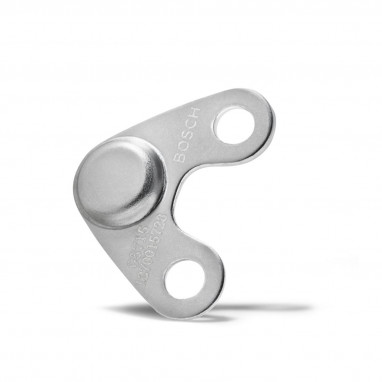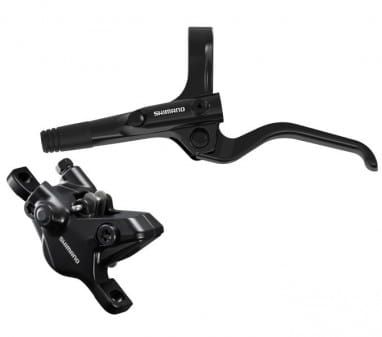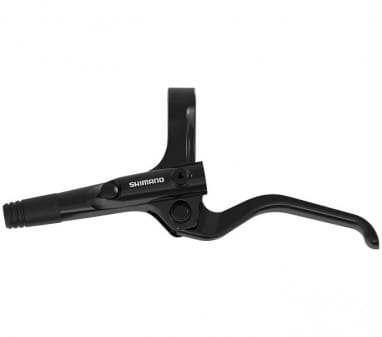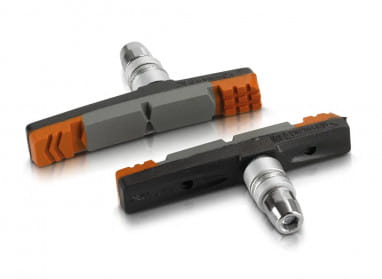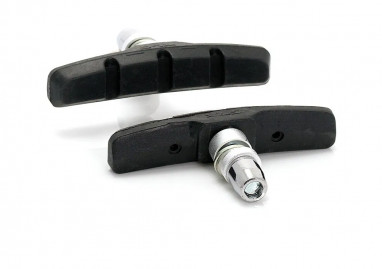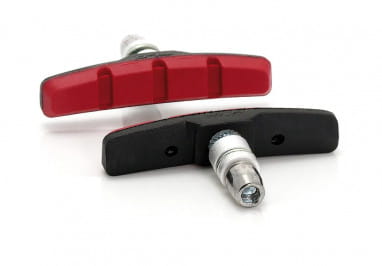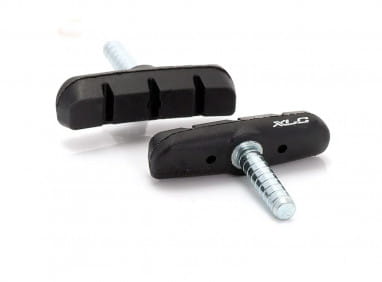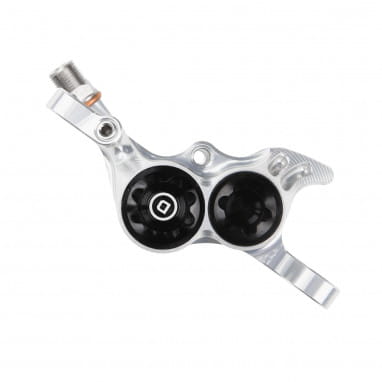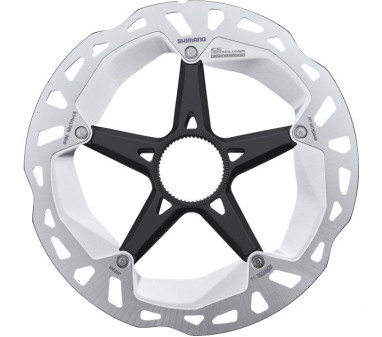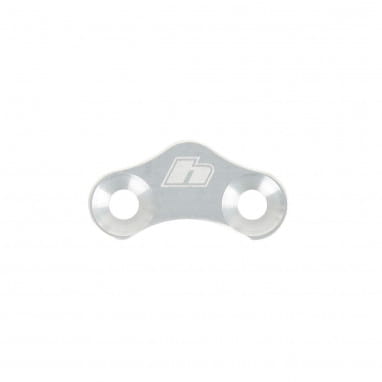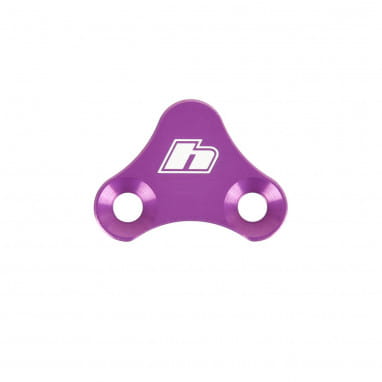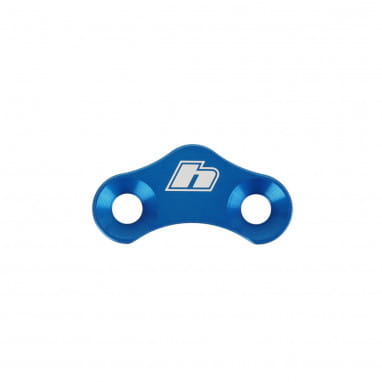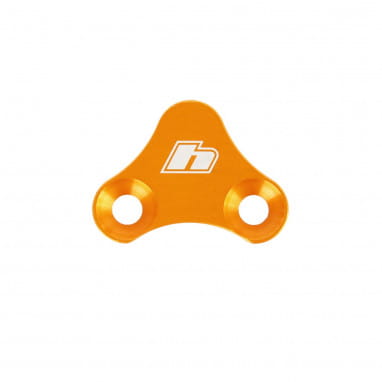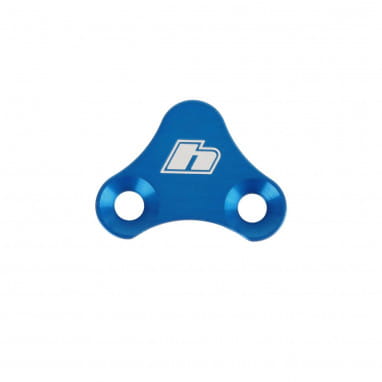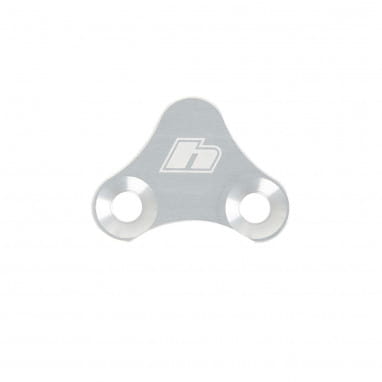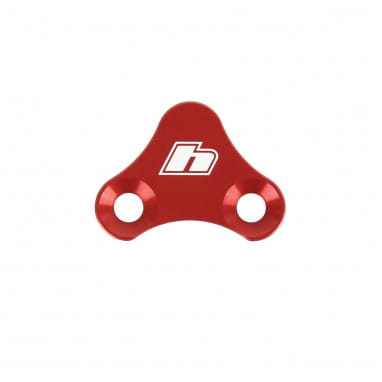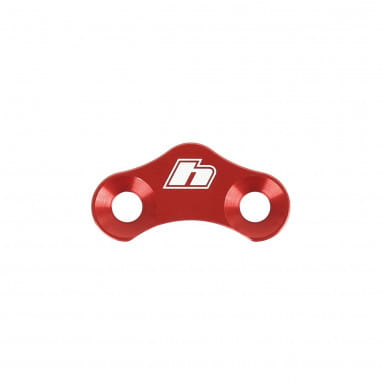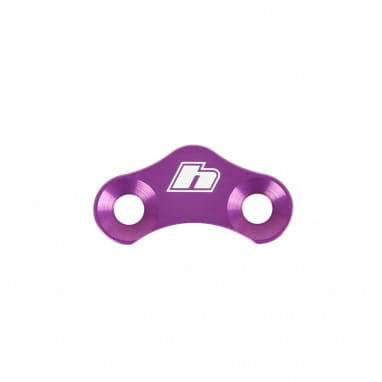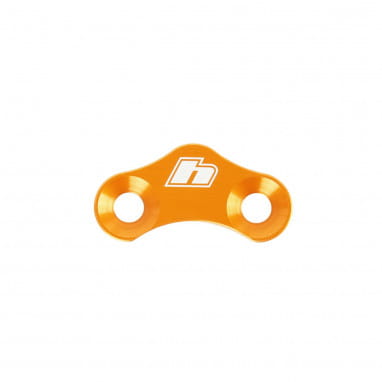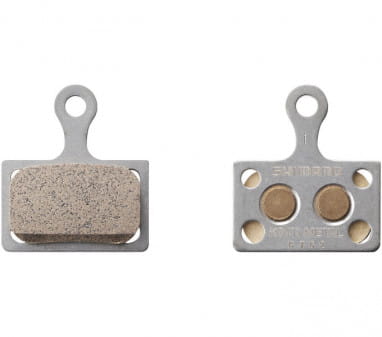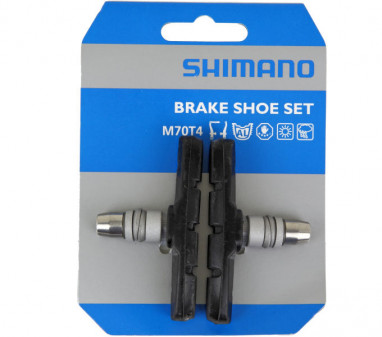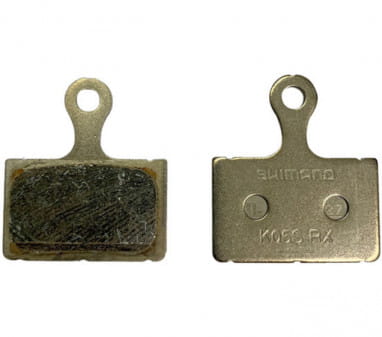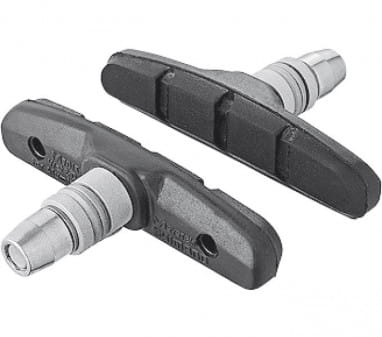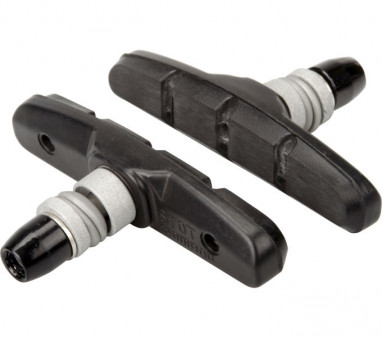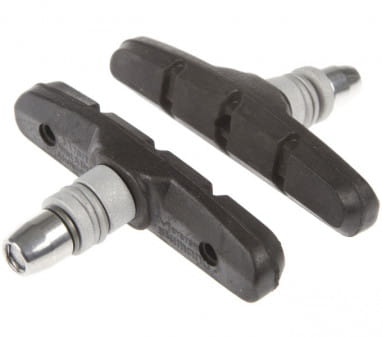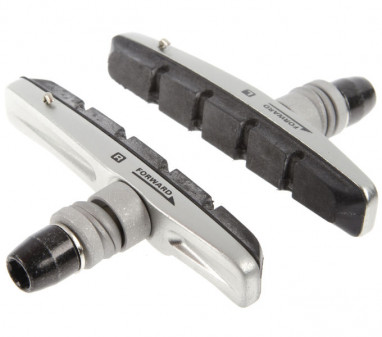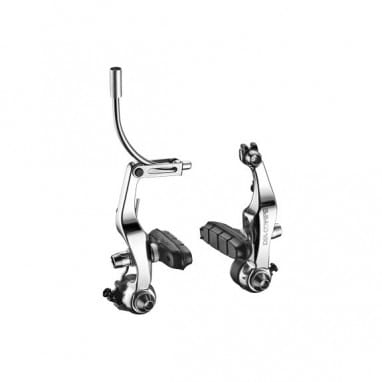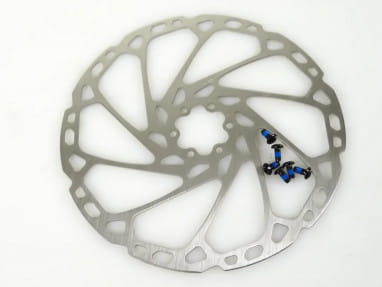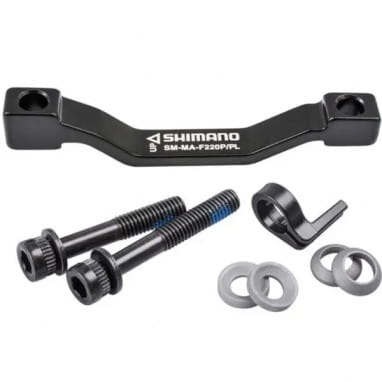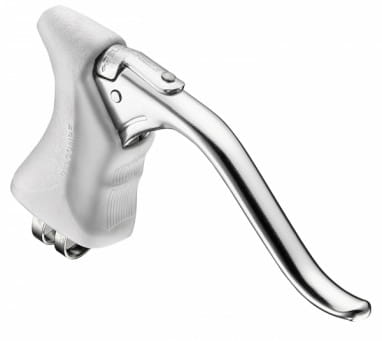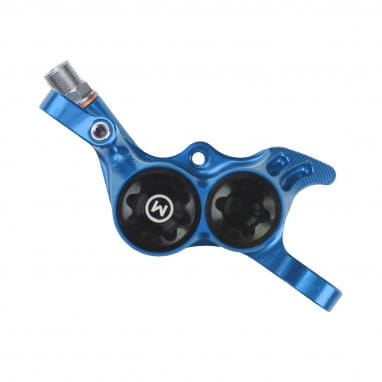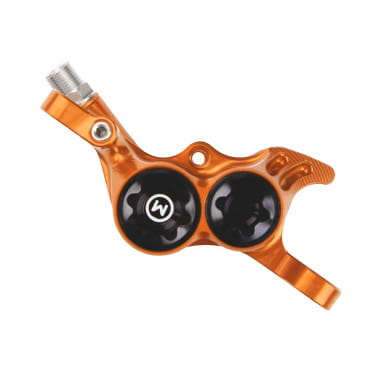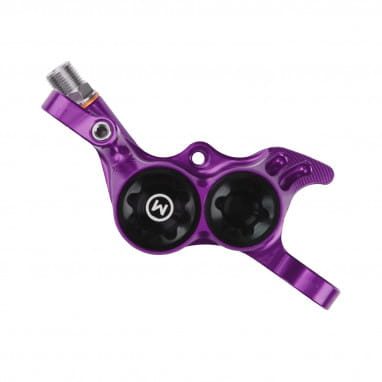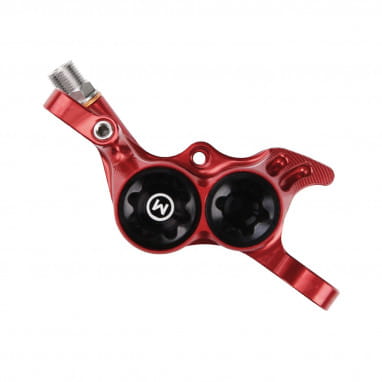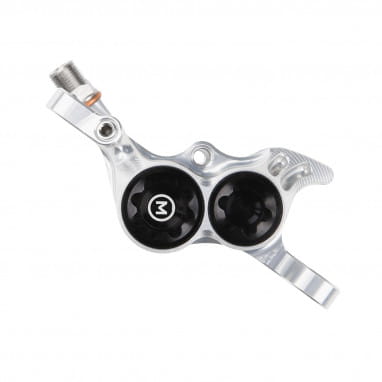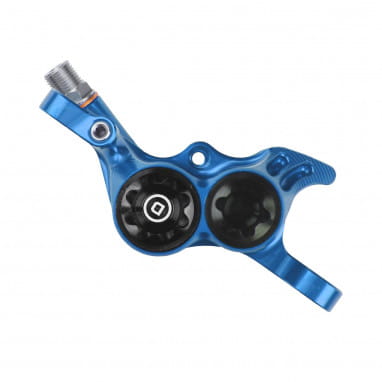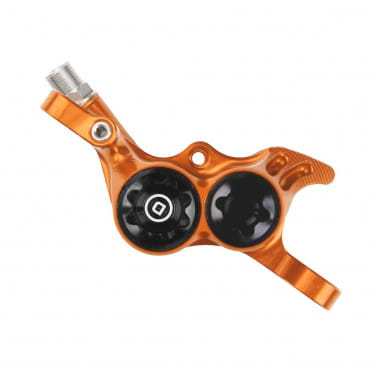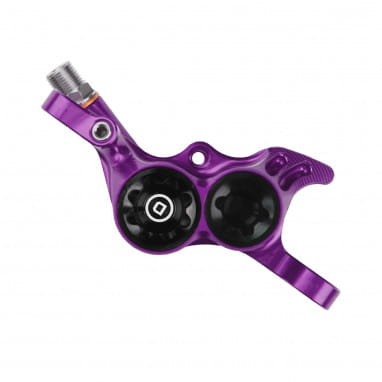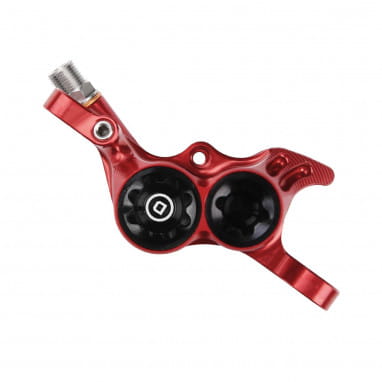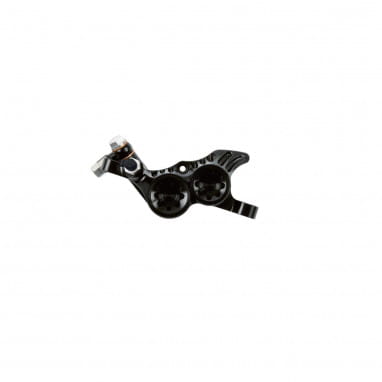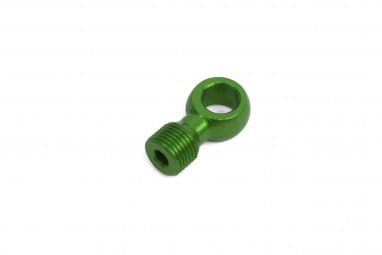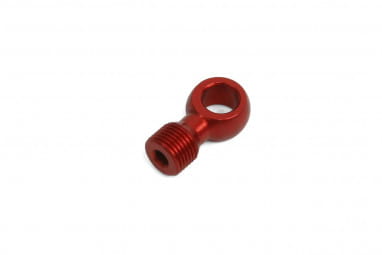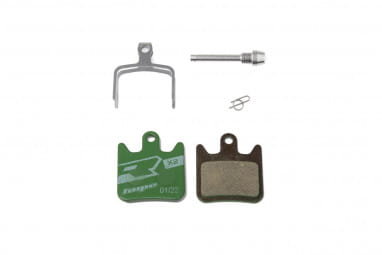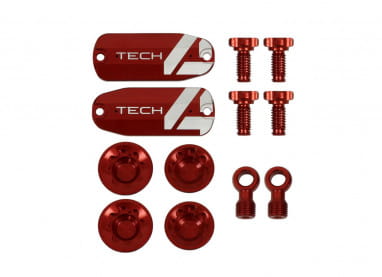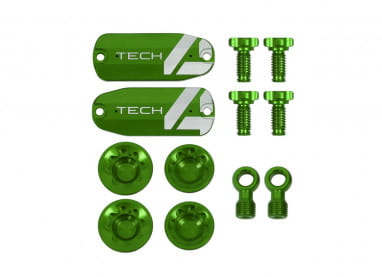If you’re a fixie enthusiast, you might disagree at this point, but under normal conditions a bike should have brakes. Generally, there are two different braking systems. For many decades, rim brakes were the bicycle brakes of choice. In recent years, however, disc brakes have become more and more popular. Here at BMO, you can find both, disc and rim brake sets. The online bikeshop offers all the spare parts, brake pads and bleeding kits it takes to keep your bike in ship-shape. Also, there is a lot of information about bicycle brakes.
Whether you're just getting a new bike, or your beloved bike needs a tune-up, every now and then bike brakes need some attention. The brake system is one of the bicycle parts that should be constantly maintained! An MTB, road bike or city bike whose brakes don't work properly is a real safety risk, so you should check your brakes every now and then. The best thing to do is to briefly pull each brake lever before every ride, this will protect you from unpleasant surprises at the first red light. A more thorough check of the brakes is then part of the annual bicycle safety check
Bike brakes - which ones are there, which are the best?
If you're looking to buy a new bike and want to know what the pros and cons of different braking systems are, you can just read straight on.
With one click, you'll jump to the section on replacement parts like brake pads and bleeding kits.
Disc brakes for bikes
In recent years, disc brakes have become the gold standard among bicycle brakes. They decelerate directly and reliably. There are mechanical and hydraulic bicycle disc brakes, on mechanical brakes a cable - a Bowden cable - transmits the power from the brake lever to the brake caliper. In hydraulic brakes the brake fluid in the cable transmits the pressure from the brake lever to the caliper.
The advantages and disadvantages of disc brakes:
- They decelerate with plenty of bite
- They brake with less hand force, so your hands don't get tired even on long downhill rides
- They work reliably even in wet conditions
- they do not cause abrasion on the rims
- If you are riding disc brakes for the first time, you will need some time to get used to the braking power
- They need to be kept clean
- They are a bit heavier than rim brakes
- they need to be braked in
- the complex design makes maintenance by casual wrenches rather difficult
This is what you should keep in mind if you ride a bike with disc brakes:
- Don't touch the brake discs, grease and sweat can burn in and ruin the brakes
- there are special cleaners for disc brakes, they also shouldn't get chain oil on them
- Watch out, the brake discs get very hot during braking!
- Mechanical disc brakes are cheaper and easier to maintain
- Hydraulic disc brakes need to be bled regularly, for this you will need a bleeding kit
- There are two different brake fluids in hydraulic bicycle brakes, DOT brake fluid and mineral oil. The two fluids should not be mixed! Whatever is in your system must go back in when you service it! Also, there are different DOT mixes, you should stick with the mix that is already in your brake lines
- Disc brakes also need new brake pads every now and then. There are different pads, most common are metallic and organic brake pads
- There are disc brakes for bikes with two or four brake pistons. Four brake pistons have a better braking effect, as larger brake pads can be installed here. More surface area means better braking action
- Brake discs come in different diameters. The larger the disc, the better the braking effect
>Here you can go to our disc brakes
Rim Brakes
Rim brakes have been proven a million times over, still many bikes have rim brakes. Compared to disc brakes, rim brakes have two main disadvantages that are causing more and more cyclists to switch to discs: Rim brakes decelerate less strongly, and significantly more hand force must be applied to achieve the same braking effect. In addition, rim brakes - as the name suggests - rub against the rim. The abrasion ensures that you'll eventually need new wheels. But don't worry, most rims will run for thousands of miles before they wear down from braking to the point where you need to replace them.
The pros and cons of rim brakes:
- Rim brakes are lighter than disc brakes
- They are simple to set up and can be maintained by many cyclists themselves
- They do not need to be braked
- They are cheaper than disc brakes
- you have to apply more hand force
- they cause abrasion on the rims
- they get dirty faster because they sit directly on the shell of the wheels
This is what you should look for if you ride a bike with rim brakes:
The brake pads need to be replaced every now and then and you should keep an eye on the rim wear, that's about it!
>Here you can buy rim brakes
V-Brakes
V-brakes are classic bicycle brakes, they can be found on many bikes. Their operation is very similar to rim brakes, only the structure of the brake and the conduction of the braking effect is slightly different. The advantages and disadvantages of these bicycle brakes are the same as those of rim brakes.
>Here you can find V-brakes
Bicycle brakes on a child's bike
The rules for the brakes you'll find on a child's bike are slightly different than the rules for the brakes on an adult bike. When buying a child's bike, you should make sure that the brake levers aren't too far away from the handlebar grips, as this is the only way that small children's fingers can reach the brake levers comfortably. Also, the brake levers should be easy to pull so that your child's strength is sufficient to apply the brake handles. The brake levers should also be made of a sturdy material. Very few children always place their bike neatly on the stand. Of course, if the bike falls over, the brake levers should not break or bend
Unlike the brakes on a bike "for grown-ups", children's brakes mustn't be too bitey especially for smaller children! A bike brake that snaps too quickly would send little ones flying over the handlebars in a high arc, so brakes on kids' bikes tend to be softly adjusted
You should practice the braking itself with your youngster in a car-free place and build up bit by bit before you take your first rides in traffic.
Which brakes are best for my bike?
In principle, well-functioning and well-maintained brakes are the best brakes for your bike, completely regardless of the braking system. That said, there are brakes that are particularly suited to a mountain bike, a touring bike, or a road bike.
Bicycle brakes on a mountain bike
Most mountain bikes today use disc brakes, because in unpredictable terrain the strong braking power of discs is essential. Disc brakes with four brake pistons are a must, especially on the breathtaking descents that downhillers and enduro bikers complete. For endurance sports, the weight advantage of two-piston brakes usually outweighs the disadvantages. If you can't decide, some manufacturers like Magura "best of both worlds"-brake sets with four biting brake pistons on the front wheel and two brake pistons that decelerate your rear wheel in the best possible dosage.
>Here's where to find mountain bike brakes
Road bike brakes
Road cyclists have long resisted the use of disc brakes; after all, every gram counts here. Heavy brakes? Unthinkable! But then more and more UCI champions were caught training with disc brakes, and eventually they were allowed on road bikes in the big bike races. Since then, road bikers and gravel bikers have had the free choice of rim brakes or disc brakes on their speedsters. Especially on road bikes are often brifters mounted, which are levers that operate the brakes and gears at the same time.
>You can buy road and gravel brakes here
Brakes on an e-bike
E-bikes are heavy and fast, so disc brakes are installed on e-bikes in most cases. If you're looking for a replacement brake, make sure it's approved for e-bikes and can handle the higher overall weight and fast speeds.
<>Go here for e-bike brakes in our online shop
But which brakes are better for my bike?
- If you only get on your bike occasionally, only ride in nice weather, and value light weight or a low purchase price, rim brakes are perfect for you.
- If you ride a lot, also go biking in wet conditions and want to achieve a lot of braking effect with little hand force, disc brakes are optimal for your bike.
Bicycle Brakes Spare Parts
Brakes need care, malfunctioning brakes put you and others at risk! But don't worry, here you can get everything you need for smoothly working bike brakes
Brake Pads
Whether you ride rim brakes or disc brakes, brake pads need to be replaced regularly. With rim brakes, any cyclist can actually do it themselves. For disc brake maintenance, a little technical knowledge is required. The brake pads for rim brakes and V-brakes are made of rubber, which is why they are called brake pads. They come in different hardnesses that affect braking performance. The rubbers have to fit into the brake shoe, for that you have to measure the length of the brake shoe, that's how you find the right brake pads. Also for disc brakes you need the right brake pads. Here on BMO you can filter the brake pads by manufacturer, then all you have to do is pick out the right model.
Brake discs
At some point, frequent bikers will be due for a new brake disc . There are brake discs with different diameters and mounting systems, so if you stick with the manufacturer and system that's on your bike, there's really not much that can go wrong when replacing them. Most common are discs with Center-Lock and 6-hole mounting or IS2000 mount. You can buy additional adapters that expand the mounting options. The diameters range from 140mm to 220mm. Most brake rotors are stainless steel, but some are aluminum in the center, which makes them lighter and ensures the rotors don't overheat.
Brake cables for mechanical bike brakes
Even brake cables get on in years, wear out and break at some point. Here in our online shop you can buy replacements for worn brake cables
Brake Fluid for Hydraulic Brakes
We explained it above, when changing your brake fluid be careful. You should definitely use the brake fluid that is already in your bike's brakes when bleeding them. There are hydraulic bike brakes with mineral oil and with DOT fluid in different compositions.
Bleeder Kits
Every brake system will draw some air over time. When the braking effect starts to diminish, you need to have your brakes bled or bleed them yourself. For that, you'll need a bleeding kit.
Brake Lever
The levers must fit the circumference of your handlebars, here you should pay attention to the clamping dimension. Also, of course, there are left and right brake levers. On road and gravel bikes brifters, a shifter and brake combo, are popular.
Adapter for bike brakes
What doesn't fit, gets made to fit - for that you can find all adapters for your brake system here in our online shop.
The 9 most important facts about bicycle brakes
- Naturally, the StVO also gives its two cents on the subject of bicycle brakes: a bicycle must have two brakes that function independently of each other. Whether you have two handbrakes or one handbrake and a coaster on your bike, however, doesn't matter to law enforcement officers
- Fixie riders may see it differently, but properly functioning brakes on your bike are your life insurance in traffic. If you want to work on your brakes yourself, you should know exactly what you are doing. If in doubt, have your maintenance work approved by a professional!
- You can convert your bike from rim brakes to disc brakes, if the fork and frame are equipped with the necessary mounting lugs
- Doomed lives longer, it still exists, the good old coaster brake! Not only on children's bikes is braked with coaster, also many city bikes have a hand brake and a coaster brake. There are also some e-bikes with coaster brakes, so you don't have to get used to them if you want to switch from a bike with coaster brakes to a pedelec.
- The right time for new brake pads has come, when the braking power decreases or the brake makes itself heard with squeaking.
- Even on a brand new bike, the braking effect can diminish after a short time. This is because the brake cables are still elongating, they give a little. Then the brakes need to be readjusted and already the delay is right again!
- When buying spare parts, you are always on the safe side if you buy parts from the same manufacturer who built your bike's braking system
- When it comes to brakes, experimenting with cheap parts often doesn't pay off. Here you should trust in the products of well-known manufacturers. That's why we have brake sets from manufacturers like Magura, SRAM, Shimano or Dia-Compe in our shop.
- Since matched systems usually work best, it's always a good idea to buy brakes in a set . A bike brake set from a good manufacturer includes everything you need to decelerate your bike safely and well-dosed.
For the installation of your brake kit you need the appropriate tool, which you can also find here on Bike Mailorder.
